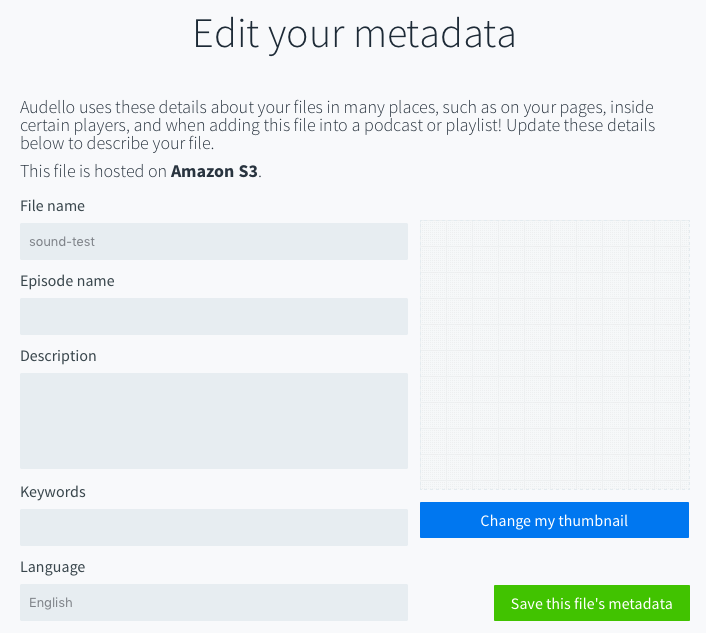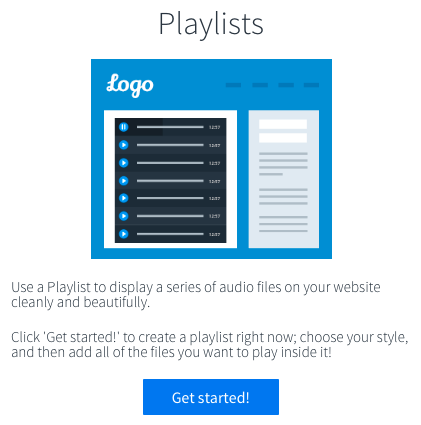Video Sales Letter Copy for Weight Loss
While consulting to an ad agency on web copy and marketing during 2014, they requested I write a full VSL script for a breakthrough probiotic weight loss program and manage production of the video.

This involved studio time with the Doctor, writing the Doctors script as well as the ‘publishers’ script and then facilitating video production via a 3rd party video editor.
Here’s the 2 minute intro of the full VSL:
Here are the slides for that intro:
The rest of the VSL involved the publishers voice as narrator with PowerPoint slides mixed in with live footage of the spokesperson, a renowned Doctor.
I wrote both scripts and liaised with the Doctor including several phone interviews as he knows his subject well.
A copywriter via my clients agency helped with some of the more standard sales copy later in the script.
As the lead copywriter the final version was mine.
Here is the working version of near final copy for the publishers voice.
Enterprise-Level Webinars for FREE? (bye bye gotowebinar…)
Webinars are killer ninja sales tools for both B2B and B2C alike…
But GoToWebinar costs $500 per month, with a limit of 1,000 attendees… and limited functionality.
If you can get a short turnaround budget approval (like, right now!) for a measly $300, you can get yourself lifetime access for unlimited webinars with unlimited attendees using a front-end platform called WebinarJam which works seamlessly and effortlessly with the Google Hangout infrastructure.
Sound complicated?
I guess it is. But WebinarJam makes it easy to use.
An amazing and a super cost-efficient way to benefit from enterprise level webinars (that means, super clean, professional and reliable) at a near ridiculous price.
Just $300 one-time if you order today. I do mean today only — as the promotion ends. Or, still, $300 per year, which still massively undercuts GoToWebinars yearly cost of $6,000!
Go now to WebinarJam and check it out.
Audience Captivation – Story Loops & Nested Loops
Story loops have been used by brilliant writers for centuries.
With the dawn of television the power of “nested loops” became clear.
Nesting story loops is the most powerful way to keep an audience engaged.
Kevin Hogan shows the lasting power of nested loops with an example of an old TV show from the 1980’s…and how people still remember the plot 25 years later.
5 Degrees of Consumer Sophistication
Gene Schwartz nailed 5 stages of market sophistication which helped my approach to strategic marketing to no end.
And I’ve just brainstormed an equivalent for consumer sophistication that considers the consumer a little more directly.
Which stage are your customers at? How do you appeal to them? Do you turn other customers off? What can you do to appeal to other customer segments?
5 Degrees of Consumer Sophistication
- Naive consumer – New to market – eager for big promises. The bigger the promise the better. “Lose 100lb in 7 days without diet or exercise!”. At this stage they’ll be lucky to select a product that works for them.
- Hopeful consumer – Aware of options – hopeful about purchases but impulse buy on claims (first impressions)
- Selective consumer – Skeptical but hopeful – needs to know and believe in mechanism of results (product quality)
- Guided consumer – Relationship sensitive (aware and educated of both product category options as well as mechanism credibility). They benefit from a credible source of information. Such as Dr Oz for health.
- Educated consumer (looks beyond hype and has opinions of what works and what doesn’t, which may be right or wrong, but they are strongly opinionated and you will need to market appropriately (e.g. financial advisors appealing to liberals vs conservatives)
How NOT to offer B2B services…
I’m searching for an inbound customer contact centre and used the live chat on one service providers website.
Here’s how the conversation went down…
Me: Nice website but the pricing table is clear as mud for me
Todd C: Hello
Me: What’s the economy plan for $29?
Todd C: My apologies. It isn’t meant to be unclear. Our economy plan is 29.00 per month for service. Every minute of operator time is 1.19 per minute
Me: ok then next to $29 it should say p/m
and it shouldn’t say ‘each additional minute’
it should say ‘per minute’
so the next one up is $109 per month and $1.09 per minute right?
do you have call agents that enter orders into your clients ecommerce platform?
Todd?
…
Thank you for contacting us.
Your chat session was disconnected because it was idle for too long.
My email to their sales team:
Wow, I’m instilled with confidence at your company’s ability to handle incoming customer contacts…
Moral of the story?
- Check your own house is in order before you expect customers
- They look like a startup so good on them for launching despite not quite being ready (rapid test and learn is fine for startup, as long as they really do optimize quickly)
- Customers like me can indeed be pesky sarcastic British a–holes
Open Letter to Membership Site Plugin Developers
Dear membership site developers,
In 2015 I’m going to create a comprehensive membership site… Oh no wait, I can’t yet… because of the state of current membership plugins.
I think the problem is the ‘minimum viable product’ mind set where developers create something they can sell, generally as good as the mixed bag of competitors, and then get lazy about creating something truly comprehensive.
In this way, ‘market leading’ doesnt really say much… does it…?
Off the top of my head:
- Dashboard analytics revealing lifetime customer value metrics including retention and churn rates. (For a membership thats pretty darned important!!)
- Payment buttons that process via whichever source the visitor came from rather than having to create entirely separate sales pages for clickbank, jvzoo, stripe, paypal, etc.
- Internal affiliate management including campaign link tracking with the ability to integrate 3rd party affiliate systems that work simultaneously.
- Credit-based subscription system allowing members to select the premium content they want on a periodoc basis (eg so member can choose which module she takes in month 2)
- Member can add notes at various places throughout member content and then review them again on those pages or in a separate notes section.
- Proper Email api integration for email providers… and not just for the usual suspects (aweber, mail chimp).
…where all of these sytems including 3rd party affiliate and email solutions work seemlessly with eachother to properly pause, cancel, enable, remove or add members to lists and product access levels.
Maybe this kind of feedback from more membership site operators will encourage a few developers to quickly fill these gaps at the start of 2015.
The membership site industry needs these features to mature.
We’re all waiting and watching for it.
yours truly,
Shawn Shaw
Director
ITVibe
Software for Podcasting (Why Podcast with Audello)
Last year Audello launched and the Podcast community was divided.
Is it the greatest tool for podcasts or just another faddish slick marketing gimmick..?
Turns out the naysayers were just miffed that a plugin turned what used to be a very time consuming technical process into a very quick and easy experience.
I finally got round to putting it to use in the past month and totally love it.
Uploading mp3’s is easy.

Editing meta tags and podcast info is easy.

Creating playlists is easy.

Publishing to iTunes is… well… I haven’t quite got that far yet.
But this month once I have 10 episodes recorded I’ll be doing a Podcast launch campaign… and I’m very confident the technical aspects will be a cinch with Audello.
Check out the very compelling description for Audello — and become a podcast rockstar like me ????
Market Research
I like to start my market research with online search volumes using Google’s keyword tool – which gives an overall general picture of basic keyword categories and how popular they are.
A simple and fast initial market research.
- Google Adwords Keyword Tool
- Also use www.google.com/trends to see how various topics are trending (becoming more or less popular, and to what degree)
That initial keyword research will reveal some broad keyword categories, to search on Google’s search engine and find some top ranking websites.
<blockquote>I was asked:
As you know, we intend to write content in each vertical some of which we will outsource, I understand it is important for us to include popular keywords in that article, what is your advice: write the article and then work in the keywords or find the keywords and sculpt the content around it?
My response:
Keep both options open. You need to get familiar with the main interests / keywords of each vertical. That way, any articles you write will tend to include relevant keywords. Also, maintain a big long list of relevant keywords for each vertical, and then just generally browse that list whenever you write articles.
Write for the reader, not the search engine. Naturally written content that keeps visitors on the page, relevant to the market, is what google looks for. Keyword inclusion is really the simple and easy bit. Most important is to use keywords in article titles, plus just a few relevant keywords in the title itself, but don’t stress about it.
Lots of fresh new content on
Customer Research
So rather than approaching customer research and insight as a one-way street, business must increasingly open up the doors of consumer collaboration to make product development and marketing a co-creative partnership between business and buyer.
“The aim of marketing is to know and understand the customer so well the product or service fits him and sells itself” – Peter Drucker
Let’s take that one step at a time:
- Know what your prospect wants
- Prove you’ve got the goods
In my early days of learning direct response coywriting I remember reading something that has always stuck in my mind.
Copywriting is 80% research, only 20% writing the actual copy.
That is to say, to create effective sales copy, we must spend enough time to genuinely and deeply understand our ideal prospect. Only then can we know what we need to do to prove to our prospect that we really do have the goods.
If you wish to persuade me, you must think my thoughts, feel my feelings, and speak my words – Cicero, Roman Statesman
The copywriters processes of arriving at prospect insight includes:
- Live prospect interaction, through customer service surveys, one to one interviews
- Internal reflection – the copywriters process of putting themself in the shoes of the prospect and reflecting on the prospects beliefs, feelings and desires as if they were the copywriters own
- Testing response in the market
Let’s take those one at a time:
Prospect interaction
Make the most of customer chatter to find out this information.
Listening rather than selling at the initial point of contact.
Internal reflection
Learn to think like your best custmers – by climbing inside the mind of the prospect. Create a storyline using these steps:
I’m a lot like you…
- Shared aspiration or dream
- Common frustrations (us vs them)
- How your spokesman/company found/created the solution (loss and redemption)
- And why you decided to share the solution (hometown boy makes good)
Real market testing
By ongoing tests you can gain insight into the most profitable customers for your business and become confident of the dominant emotions and desires that lead to the sale.
Your Prospects Core Complex
A model used by some of World’s largest direct mail publishing companies uses the model of identifying your prospects Core Complex – Made up of 3 components: Intellectual, Psychological, and Emotional.
Beliefs
What does my prospect believe (with relevance to my product/niche target). Does he believe, for example, that short-term day trading is risky, or difficult, or expensive (haha), or requires great time commitment, or should only be done with a small portion of their overall investment portfolio, or is the best thing since derivatives trading begun back in babylonia.
Knowing the prospects beliefs will help you built your aggressive marketing campaigns to lazer in on exactly the right things to say in your promotion copy.
Frustrations
But we don’t just want to stop at the prospects general beliefs. We want to get right under their skin and know exactly what is causing them pain, with regards to the product. Not just frustrations with other products in the market place, or problems they have with succeeding with whatever the product is supposed to help with, but also their life frustrations caused by any limitations in their success.
Desires
And finally of course I find out just what exactly is on the minds of my target prospects with regards to what they really want.
Your Prospects Pain
What pain in your prospects life are we going to solve through our product?
Pain always falls into 3 main categories
- Financial
- Strategic
- Personal
To properly diagnose a prospects pain, you simply need to answer 4 questions:
- What is the source of the most prominent pain?
- What is the intensity of that pain?
- What is the level of urgency requiring the pain to be solved?
- Is the prospect consciously aware of the pain and its source?
Diagnosing pain is best performed through extensive market research, to explore and measure it fully.
Customer Profiles
You can then build genuine customer profiles, not just models based on demographics.
- Demographics – social classifications such as age, gender, marital status, race, income, education
- Geodemographics – with a specific community
- Generational influences
- Category cycle – attittude towards the product category
- Market adaption cycle – innvoators, early adoptors, late adoptors, and laggards
VALS uses psychographics, a combination of psychology and demographics and segments customers according tounderlying psychology (self-orientation) and the resources (age, education, income, energy level, and self-confidence) they have available. See www.sric-bi.com for the VALS survey.
The whole purpose of developing customer profiles is so that you can develop and execute personalised promotions.
And developing this 1:1 relationship with your customers elevates the lifetime value of each customer by retention through your products life cycle.
B2B Marketing Sidenote
Don’t make the mistake of thinking B2B copy should be flat, dry and boring. The copywriters process is very similar for consumer marketing or B2B marketing, because businesses are not customers – people are.
Aims of Prospect Insight Research
In general, customer want individualised respect, service, pride in their product choices, product options, and information to make informed decisions. As such, they tend to trust the vendors that provide them with information so that they can make better decisions.
Our aim is to establish:
- product usage
- purchasing behaviour / decision process
- urgency of need
- motivational influencers
More questions:
- Who is your prospect? pretend your prospect is sitting across foryou
- What does your prospects really want?
- What is his or her hot point? What are the top fears and frustrations for your prospect?
- What are their top wants and desires?
Motivational Influences
- What things does your product(s) do or give your prosepcts that he or she doesn’t know about?
- What are the primary motivators? (Status, leisure, convenience, advancement, pleasure, comfort, security, basic needs, self-reliance).
- What are the most frequently used and influential information and refernce sources among your key customer groups?
Having developed your customer profiles, you will be able to proceed to the Conversion Stage in the Marketing Matrix, which includes relevant involvement devices and actual copywriting.
For now, you can return to the Market Research main page to continue.
Competitor Research
More to come, but…
Can you determine your competitors strategy by reviewing their apparent sales strategy?
You can see their market segmentation, product innovations, etc… just by looking.
So look.
<p>Recommended Resource: Use Mark Joyner’s <a href=”http://www.simpleology.com/p/competitiveintelligence/nathanshaw/gscom-page” target=”_blank”>Competitive Intelligence Cash Maps</a> for managing the process of competitor research.</p>


